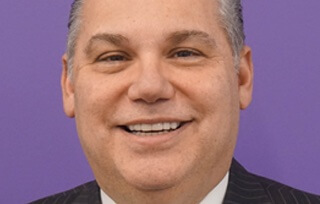Unlock the Editor’s Digest for free
Roula Khalaf, Editor of the FT, selects her favourite stories in this weekly newsletter.
Markets and finance thrive on sounding clever. But over nibbles and wine at a recent event, a couple of professional fund managers admitted their grand investment thesis at the moment is as follows: the market wants to go up. Don’t overthink it.
Yes, it’s bad to talk about “the market” as if it’s a person. No, it’s not a very sophisticated analysis. But it has been a widespread worldview of late, so much so that Goldman Sachs this week said its Risk Appetite Indicator — a measure of enthusiasm for risk across a wide range of asset classes — was close to its highs from 2021, and moving towards the highest levels since 1991.
Such an upbeat mood tends to make market nerds nervous. It smacks of complacency and bakes in extra vulnerability to shocks from growth or interest rates or any of the other factors that bump asset prices around. “This could present a speed limit for risky assets into the summer,” the bank’s analysts said.
They were not wrong. Hours after the report was published, stocks pulled back quite hard. Even the glow of yet another blowout set of results from chips giant Nvidia was not enough to cancel out a fresh dollop of strong US economic data that has knocked back expectations for rate cuts yet again.
An overheating American economy remains the number one cloud hanging over markets right now. Investors are getting used to the idea that interest rates might not fall in the US this year, even though that marks a humbling reversal from what was seen as a nailed-on certainty of multiple cuts at the start of this year. What they are not ready for is rate rises. We are getting uncomfortably close to the point where that becomes a serious prospect, but we are not quite there yet. So, this week’s wobble notwithstanding, it still feels as if fund managers’ fingers are always hovering over the “buy” button.
As an example, in mid-May, it took only a tiny pullback in US inflation to prompt stocks to rocket to new all-time highs. Consumer price index inflation sank to 3.4 per cent in April, from 3.5 in March. That is hardly a convincing return to the sweet, sweet disinflation that fund managers like so much. But the slight slowdown was enough for the S&P 500 index of blue-chip US stocks to push into new territory. Corporate bond markets remain very much in demand, pulling the gap in yields between credit and government bonds ever tighter. The gap, or spread, may be skinny, but the all-in yield, at north of 5 per cent in the US seven- to 10-year maturities, is still more than enough to keep specialist investors and credit newbies interested.
Of course, if you actively want to avoid looking on the bright side of life, you can. Société Générale’s permabear-in-chief, Albert Edwards, is railing against the US Federal Reserve, arguing it is “sowing the seeds of yet another policy disaster”.
“In my opinion, tighter for longer is bonkers quite simply because it is now driving goods inflation into deep deflation to balance out higher services inflation,” he said. “It ranks with that catastrophic central bank policy error of keeping monetary policy super loose for the 25 years prior to the pandemic.” There’s no pleasing some people.
And for sure, those who believe the Fed is incompetent, and/or that the US is hurtling towards a fiscal crisis and even those who believe the dollar is about to lose its status as the global reserve currency could be right this time. Maybe the sky-high gold price really is telling us something. But by definition, none of these tail risks is imminent or likely.
Even Michael Wilson of Morgan Stanley, one of the most outspoken bears on Wall Street, has lifted his 12-month target for the S&P 500 to 5,400 from a paltry, and deeply under water 4,500. Cynics might see that as a contrarian indicator, given how long Wilson stuck to his bearish guns, but others who have been more positive on the market for some time have also turned up the dial. UBS’s chief investment office has also raised its year-end target for 2024 for the S&P 500 to 5,500, from 5,200. It also anticipates the index will hit 5,600 by the middle of next year.
Geopolitical shocks that could serve to undermine risky markets, such as the sudden death of Iran’s president in a helicopter crash or China’s hostile rhetoric towards Taiwan’s new leader have proven incapable of taking the shine off stocks. What’s not to like?
Matt King, formerly of Citi and now running Satori Insights, nonetheless cannot resist urging a little caution. “The trouble with momentum-driven markets is that momentum and Fomo [fear of missing out] are often all that’s driving them,” he said in a recent note. “That may still suffice to trump all other considerations, and inflict considerable pain on anyone daring to try a value- or fundamental-driven short, but it nevertheless creates an underlying fragility.”
Perhaps. But as my wine-supping companions argued, the market wants to go up. The tension between this basic-but-compelling instinct and the spectre of higher interest rates will define how markets behave for the rest of this year,






